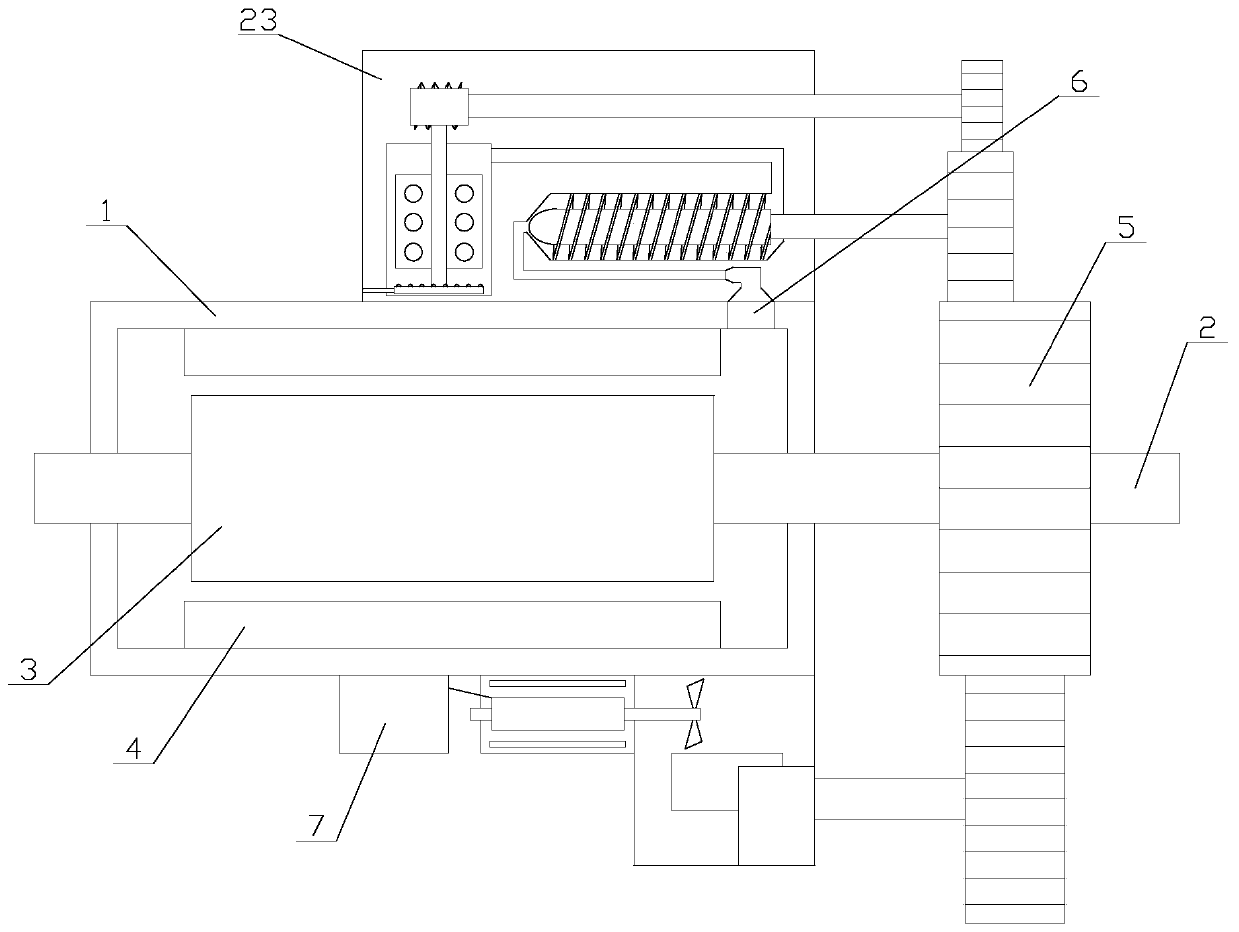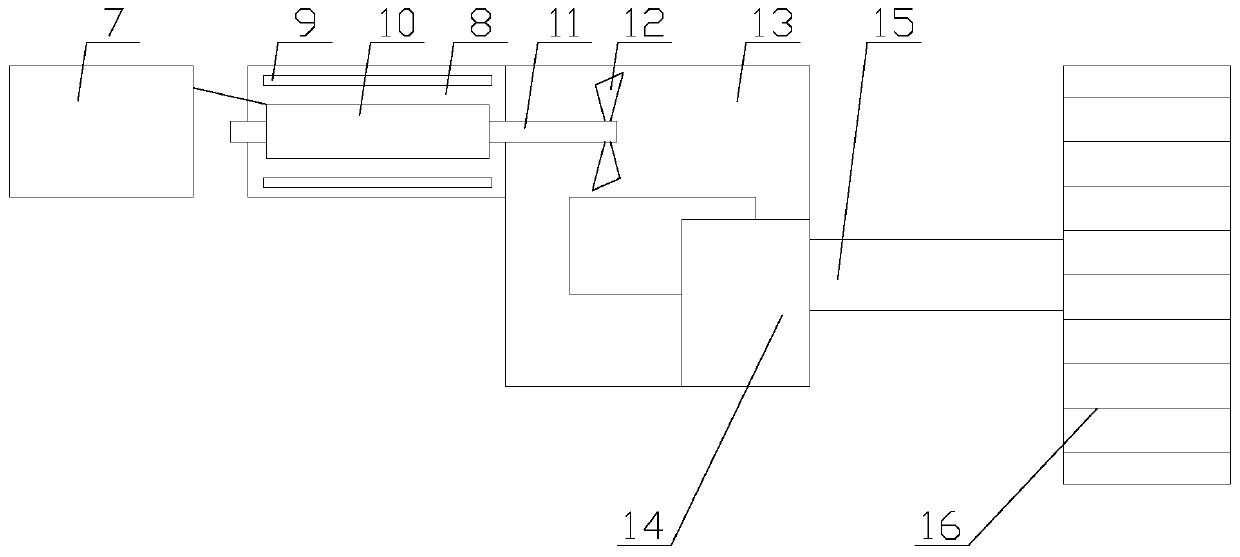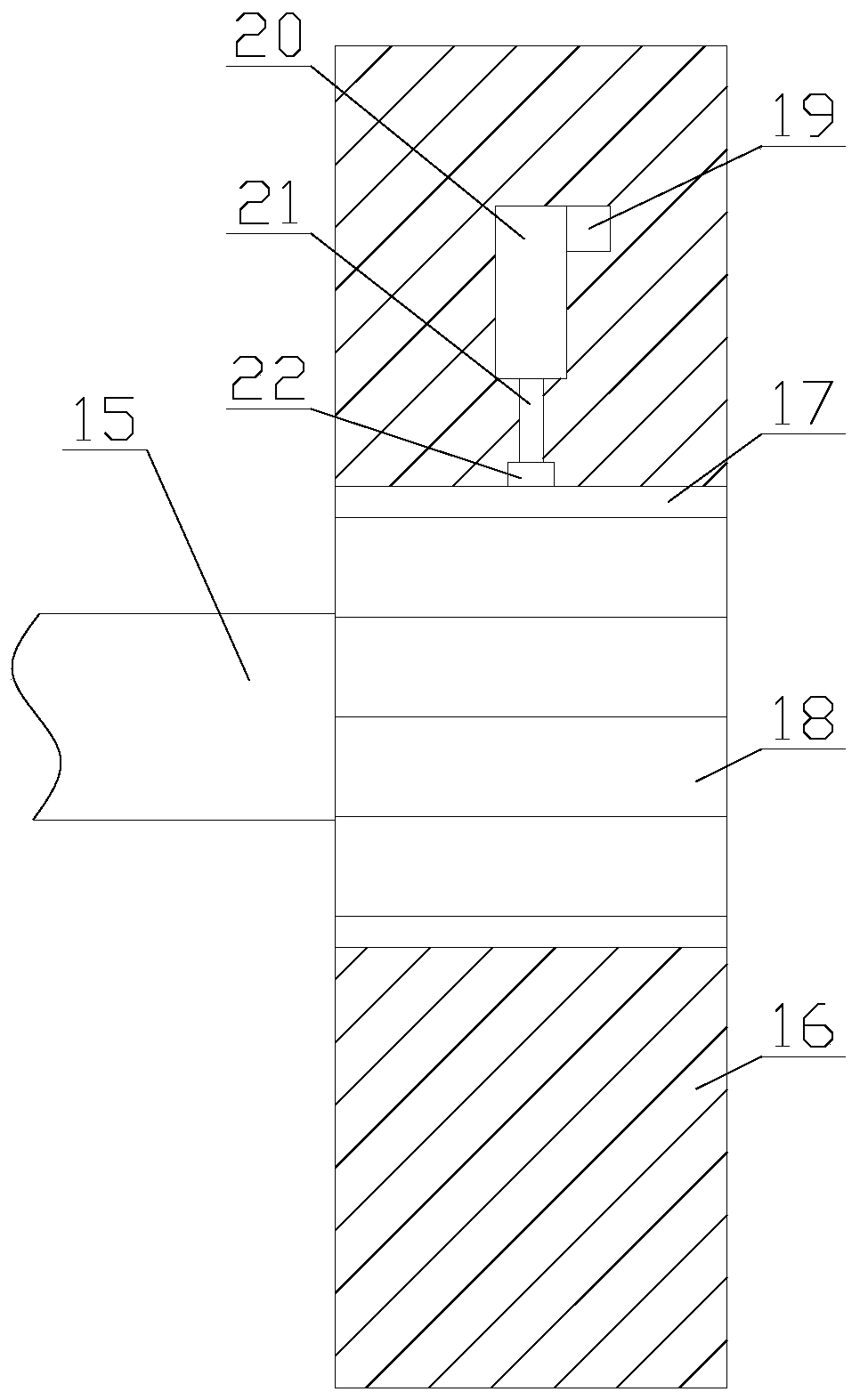A motor with braking energy recovery function for new energy vehicles
A braking energy recovery, new energy vehicle technology, applied in the direction of motors, electric vehicles, electric braking systems, etc., can solve the problems of motor short-circuit burnout and large motor energy consumption, so as to prevent short-circuit burnout and reduce unit energy consumption , good dehumidification effect
- Summary
- Abstract
- Description
- Claims
- Application Information
AI Technical Summary
Problems solved by technology
Method used
Image
Examples
Embodiment Construction
[0027] The present invention is described in further detail now in conjunction with accompanying drawing. These drawings are all simplified schematic diagrams, which only illustrate the basic structure of the present invention in a schematic manner, so they only show the configurations related to the present invention.
[0028] Such as figure 1 As shown, a motor with braking energy recovery function for new energy vehicles includes a main body 1, an output shaft 2, a first gear 5, a recovery mechanism and a dust removal box 23, and one end of the output shaft 2 passes through the main body 1. The output shaft 2 is fixedly connected with the first gear 5, the output shaft 2 and the first gear 5 are coaxially arranged, the recovery mechanism is arranged under the main body 1, and the dust removal box 23 is fixed on the side of the main body 1 Above, the main body 1 is provided with a PLC, the rotor 3 and the stator 4, the dust removal box 23 is provided with a dust removal mech...
PUM
 Login to View More
Login to View More Abstract
Description
Claims
Application Information
 Login to View More
Login to View More - R&D
- Intellectual Property
- Life Sciences
- Materials
- Tech Scout
- Unparalleled Data Quality
- Higher Quality Content
- 60% Fewer Hallucinations
Browse by: Latest US Patents, China's latest patents, Technical Efficacy Thesaurus, Application Domain, Technology Topic, Popular Technical Reports.
© 2025 PatSnap. All rights reserved.Legal|Privacy policy|Modern Slavery Act Transparency Statement|Sitemap|About US| Contact US: help@patsnap.com



